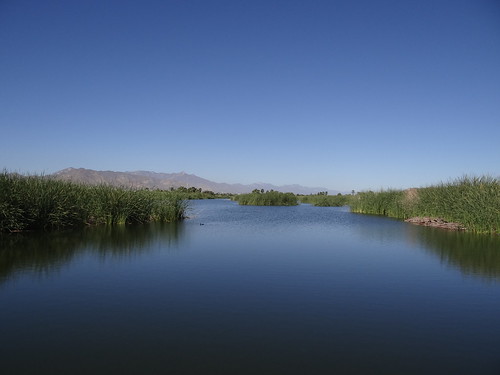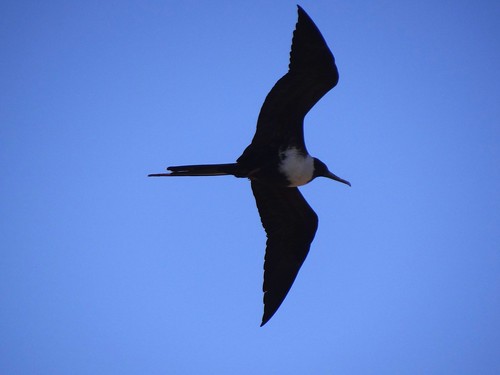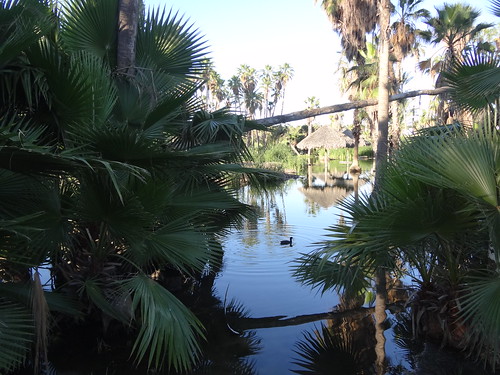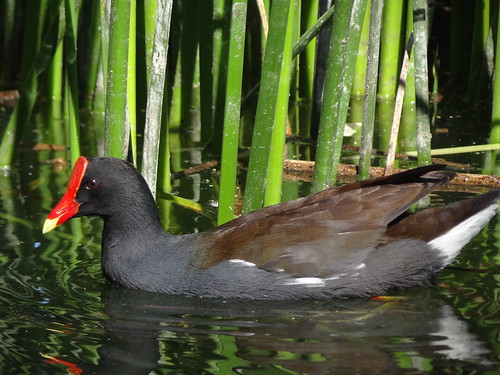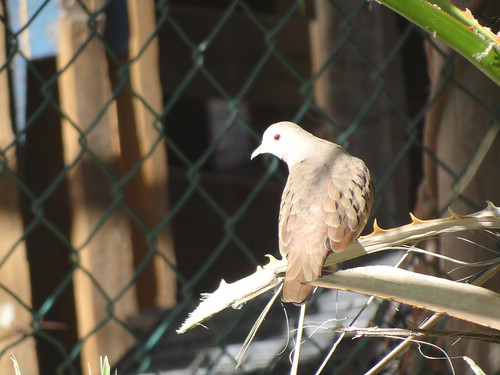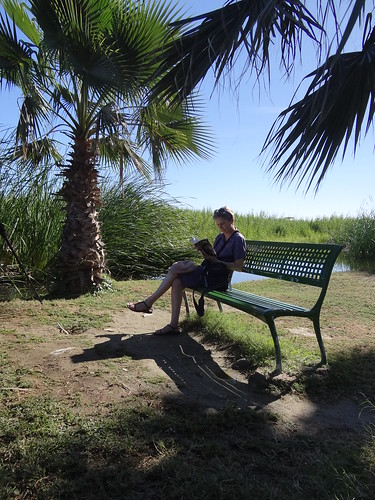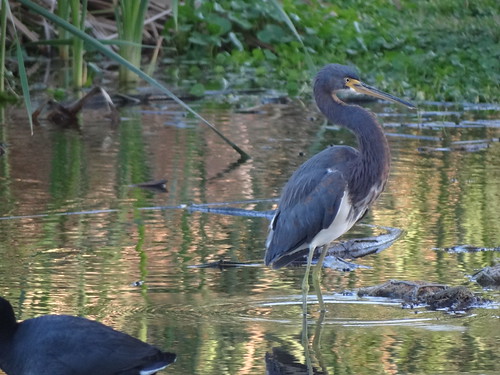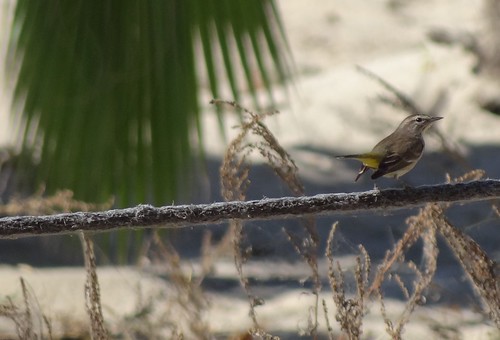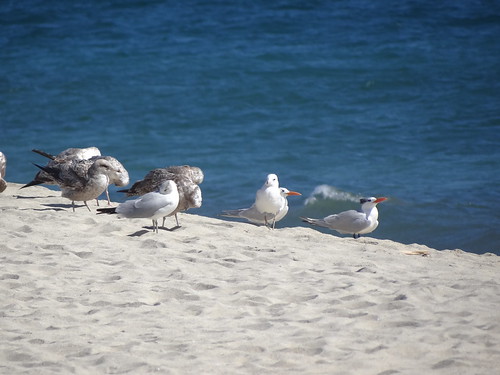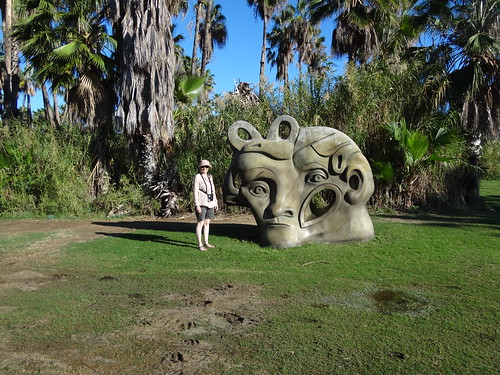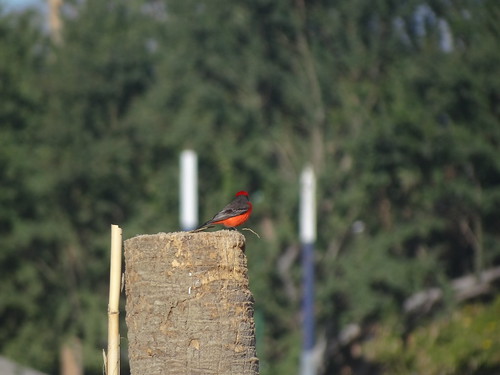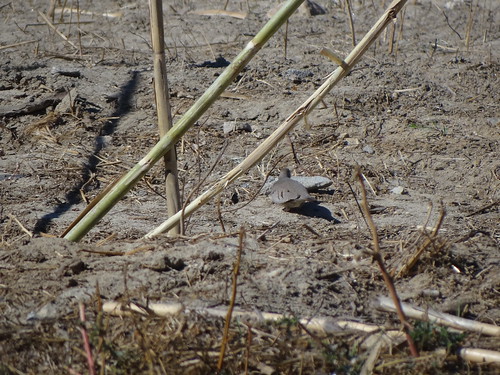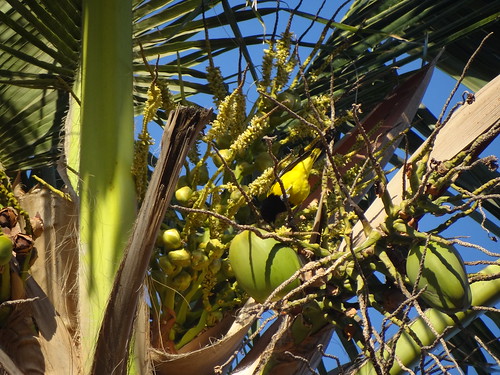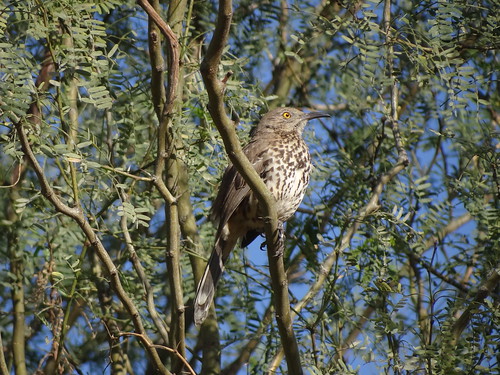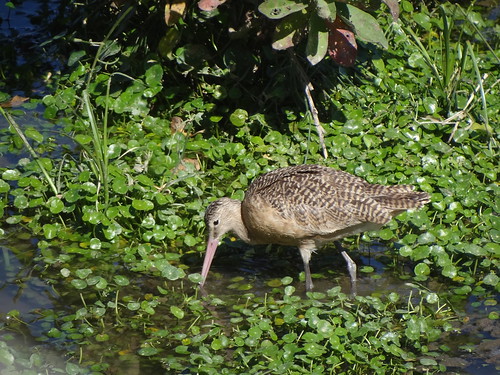No, Mexico’s party capital (or one of them, at least) is not the sort of place you might expect to find us headed for a quiet winter’s vacation. I happily confess to an almost immoderate love for the country and its wonderful people, but “Cabo”? My worst fears were confirmed, then exceeded, as the excitement of stepping out of the plane into a new part of the world yielded to amazement at the hotels and the shopping centers and the traffic and the noise.
And then, horribile dictu, the food: we set out for a restaurant with good, even superlative reviews, and found it pleasant (with Costa’s hummingbirds and common ground-doves in the garden) but found the food a slight step worse than the simple burritos and such I whip up in our own kitchen on those nights when I’m condemned to cooking. And that was pretty much the best meal of our eleven days.
Barely having arrived, we were ready to go home, full speed backwards and no matter the torpedoes.
Sleep always helps, though, and so too did breakfast, the unfailingly genial staff at our hotel, and the first views of turkey vultures, crested caracaras, and magnificent frigatebirds out the window.
So we decided to make the best of it — and ended up having a good time, the weird cultural vibe (or lack of any cultural vibe, rather) notwithstanding.
We spent most of our time birding the famous Estero San José, a usually easy, sometimes nerve-racking ten-minute drive from our hotel.
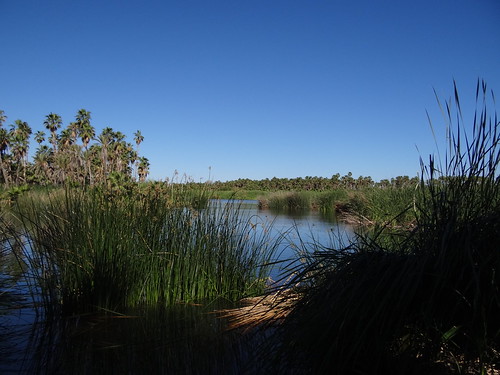
With no obvious connection to the nearby sea, the Estero isn’t quite an “estuary” as I think of one, but it is a beautiful and fairly extensive bit of fresh water, with palm stands, open shore, and reeds, rushes, and cattails emerging from the shallow flats. I was a bit nervous on our first visit, given the relative lack of available information about birding the place and the ubiquitous warnings that it had been spoiled by hotel construction (like most of the Los Cabos area) and wrecked by the 2014 hurricane. But to those of us who never saw it in its heyday, it looked pretty good, and produced consistently fine birding on every one of our almost daily visits.
The storm damage was evident, with sidewalks abruptly sinking into the water and what were once picnic tables and shelters forming inaccessible islands — but we had no past to mourn, and eventually figured out how to bird the place from almost every angle. More troubling, predictably, were the hotels still sprouting on the beach; but for the moment at least, the estero itself seems safe from development.
We found three good points of access, on some days visiting all three, on others dropping in at one and just hanging around waiting for the birds to come by. The easiest and obviously best known is at the dead end between the Holiday Inn and the little riding stable, where a former parking lot gives easy views into some of the newly flooded areas and out onto the historic estero.
This was a great place to simply stand, at any time of day, with American coots, common gallinules, pied-billed grebes, Gila woodpeckers, tropical and Cassin’s kingbirds, cactus wrens, and half a dozen duck species essentially guaranteed. Best of all, a little flock of ruddy ground-doves usually joined the house sparrows and orange-crowned warblers feeding with the chickens and graylags, and whenever they emerged from beneath the shade of the palms, it was hard not to get outstandingly good looks.
The most abundant waterfowl seen from this site were blue-winged and cinnamon teal and ruddy ducks, but we found that even when we didn’t have time for a walk, a few minutes’ patience usually beefed up the duck list with redhead, lesser scaup, northern shoveler, or even the odd ring-necked duck. At lower tides, we could count on long-billed dowitchers and spotted sandpipers, and a couple of times we got to see a fine Wilson’s snipe sitting out in the open.
The parking lot once opened onto a sidewalk that led north along the west edge of the estero, but the 2014 storm put paid to that. There is still access, though, to the bottom of the estero and the beach, along a narrow, sometimes dampish path leading along the back of the Holiday Inn. The first stop there, just a few feet along, was The Bench, a quiet little corner that proved excellent for watching Belding’s yellowthroats (and plenty of common yellowthroats, too, of course) and common gallinules.
Incomprehensibly, some people seemed to use it for non-birding purposes, but I think birders got the most out of it, especially in the early evening, when green, tricolored, and great blue herons, black-crowned and yellow-crowned night-herons, and great and snowy egrets found the little pools to their liking. This was also where we saw the only groove-billed ani of our visit, a single bird that flew in to perch briefly in the top of the cattails and was gone.
The path opens up onto the sandy beach then, skirting the back of the Holiday Inn’s pool (the sight of which was yet another confirmation that we would never be proper Baja tourists). On our first morning’s walk, a western palm warbler was a nice surprise, and we would see the bird again on almost every subsequent visit, too.
Remembering how long it had taken me to finally see that species in Arizona, I was pretty excited, but no one else shared my enthusiasm, even when the bird perched in the palms.
The Sea of Cortez flashes into view just as the pale flab of the Holiday Inn swimmers recedes, and with it usually the first good looks at perched larids. The only common gull here was the California gull, joined by the odd ring-billed and laughing gull; a couple of times we found a Forster’s or royal tern or two loafing alongside.
I was surprised not to see our old Sonoran friend the yellow-footed gull here, but we did get to see a few farther south, at Las Viudas and then off Sodom Lucas del Cabo later on.
There is a rickety observation platform on the beach, with views into some of the hidden corners of the lower estuary; it was from here that we saw sora, marsh wren, and all the usual waterfowl. Eared grebes were usually common on this broader, more open part of the estero,
and there was a reliable western grebe here, too, on one morning accompanied by one of those smudgy-faced indeterminate Aechmophorus creatures so common in the winter.
On some visits, we walked the beach nearly to the marina, which here in New Jersey would have had loons and brant and purple sandpipers, but all in all the birding petered out pretty quickly at the easternmost point of the estero proper. What we found more productive was to instead approach that area from the north, by way of the Wirikuta cactus “gardens” (in fact, a greenhouse and nursery). We paid through the nose to park there, but the paths and dirt roads wind through palm forest, past junky brush piles, and eventually to the northeastern portions of the estero.
The sculpture gardens are sodded and irrigated, producing just the right habitat for killdeer, vermilion flycatchers, and black phoebes. If the birds weren’t enough, there were also odd things to look at — and sculptures, too.
We assembled the longest species list on a morning when we joined those two access points with a third, reached from the road running along the west edge of the estero. Fences and walls line the busy street, most festooned with proclamations of private property and warnings of the fate to befall trespassers, but there is in fact a public dirt road that leads in through some scruffy palm forest right to the shore of the estuary, where a sidewalk leads north to the bridge and, once upon a pre-hurricane time, appears to have led back south to the Holiday Inn.
There are a couple of observation platforms here, but we found that the best approach was simply to park the car at the first wide spot and walk slowly north to the dusty corrals, where vermilion flycatchers and common ground-doves haunted the edges.
Cattle egrets, otherwise scarce to non-existent in town, were reliable here around the feet of the patient horses, and unsurprisingly, this turned out to be the best spot around for icterids: we eventually found Brewer’s, red-winged, and yellow-headed blackbirds, brown-headed cowbirds, and hooded and Scott’s orioles in the trees and on the wires above the stalls.
One morning, at the southwest corner of the corrals, we finally stumbled across some flowering vegetation that was not bougainvillea. The birds were enjoying it, too, and we spent the better part of an hour just standing there watching black-headed grosbeaks, house finches, western tanagers, hooded orioles, mountain white-crowned sparrows, verdins, blue-gray gnatcatchers, and San Lucas cardinals scouring the area. And then, finally, I heard something.
I’d naively assumed that the gray thrasher would be the easiest of the species-level endemics we were in search of, but it took several days to find one; we would see another at Todos Santos, but those two would be it over our entire eleven days. To call it a handsome thrasher would be to risk pleonasm, and to say that its voice was sweet would only confirm expectations — but even by the exalted standard set by other mimids, this is a truly snazzy bird.
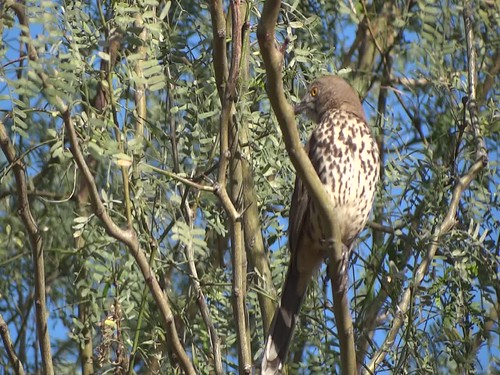
From the observation platform at the northeast corner of the corrals, a little footbridge crosses a wet ditch with green herons, blue-winged teal, and spotted sandpipers; a paved sidewalk then hugs the wall of the sewage plant nearly to the highway bridge. On our first visit, this was a fine place to stand and watch birds fly in and fly past, but later in our stay we discovered that the manhole at the sewage outfall had backed up, leaving a noisome skim on the sidewalk. Fortunately, the flood had been contained by the sidewalk’s high curbs, and we were able to get past by walking through the dry flower beds.
Even before that unpleasant incident, that stretch of the estuary definitely smelled like shorebirds. Spotted sandpipers, greater yellowlegs, least sandpipers, and long-billed dowitchers picked and prodded in the shallow water, and on our first visit Alison found a very nice marbled godwit among its lesser kin.
The Estero San José shows up in eBird as the most species-rich “hotspot” in the state of Baja California Sur. It was certainly the most consistently productive site we visited during our stay, and if we were ever to go back to Baja, we would probably just stay at that Holiday Inn and spend our days on the estuary. This time, though, we had other birds to fry….

